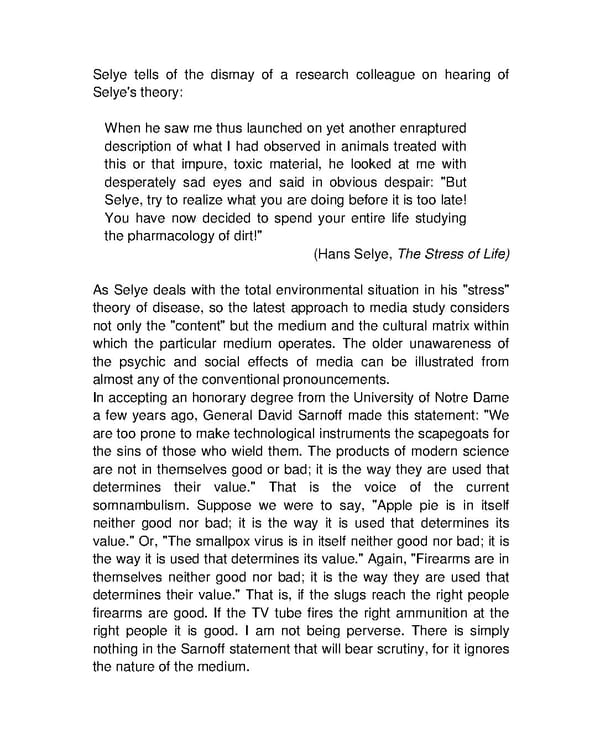Selye tells of the dismay of a research colleague on hearing of Selye's theory: When he saw me thus launched on yet another enraptured description of what I had observed in animals treated with this or that impure, toxic material, he looked at me with desperately sad eyes and said in obvious despair: "But Selye, try to realize what you are doing before it is too late! You have now decided to spend your entire life studying the pharmacology of dirt!" (Hans Selye, The Stress of Life) As Selye deals with the total environmental situation in his "stress" theory of disease, so the latest approach to media study considers not only the "content" but the medium and the cultural matrix within which the particular medium operates. The older unawareness of the psychic and social effects of media can be illustrated from almost any of the conventional pronouncements. In accepting an honorary degree from the University of Notre Dame a few years ago, General David Sarnoff made this statement: "We are too prone to make technological instruments the scapegoats for the sins of those who wield them. The products of modern science are not in themselves good or bad; it is the way they are used that determines their value." That is the voice of the current somnambulism. Suppose we were to say, "Apple pie is in itself neither good nor bad; it is the way it is used that determines its value." Or, "The smallpox virus is in itself neither good nor bad; it is the way it is used that determines its value." Again, "Firearms are in themselves neither good nor bad; it is the way they are used that determines their value." That is, if the slugs reach the right people firearms are good. If the TV tube fires the right ammunition at the right people it is good. I am not being perverse. There is simply nothing in the Sarnoff statement that will bear scrutiny, for it ignores the nature of the medium.
 Understanding Media by Marshall McLuhan Page 12 Page 14
Understanding Media by Marshall McLuhan Page 12 Page 14